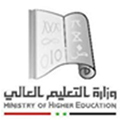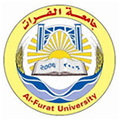آخر الأخبار
تأثير طرق الري مع استخدام مياه مختلفة النوعية في بعض المؤشرات الكيميائية للطبقة السطحية للتربة وإنتاجية محصول القمح صنف (بحوث6)
2014, Volume 10, issue 37,pp 245-260| Cite as
Effect of ways irrigation with using deferent water quality in some chemical properties superficial layer of soil and the productivity of wheat crop variety (Bohouth)
| authors |
Majid Emrir |
| Abstract |
The experiment has been done during (2009/2010) with individual intersected effects of using water of different salty levels with the help of some new ways of irrigation on some properties of superficial layer of soil in conditions of The 7th of April farm in deir-ezzor and the productivity of wheat crop. By using agricultural drainage water 100 %, fresh waster 100 % and 50 % drainage + 50 % fresh water (mixed). Following the superficial irrigation system ( basins ) and sprinkling and dripping irrigation systems using split plot design. With three repetitive courses the result of the experiment showed the following: *An increase in the (Ece) of soil in irrigating by dripping then followed by sprinkling comparing it with superficial irrigation when using agricultural drainage water compared with fresh and mixed water. * An increase in the( Na“) and (CI) of soil when using agricultural drainage water compared with fresh and mixed water in irrigating by dripping then followed by sprinkling comparing it with superficial irrigation. * An increase in the (SARs) of soil in irrigating by dripping then followed by sprinkling comparing it with superficial irrigation when using agricultural drainage water compared with fresh and mixed water. * there was a transcendence in the values ability of using water for wheat crop in the treatments of dripping system irrigation compared to other ways of irrigation and its reduction when using agricultural drainage water compared with other kinds of water. The statistical analysis( L.S.D) proved that their were significant differences among irrigation systems and the used water.
Key words: ways irrigation, agricultural drainage water, Salinity water, wheat crop |
| الكاتب |
ماجد امرير |
| الملخص |
نفذت التجربة الحقلية في أراضي مزرعة السابع من نيسان في محافظة دير الزور خلال موسم (2010/2009). بهدف تقييم أثر إضافة مياه الصرف الزراعي وطرق الري على تراكم الأملاح في التربة وإنتاجية محصول القمح. وشملت الدراسة استعمال مياه صرف زراعي بنسبة (100%), ومياه فرات بنسبة (100%),ومياه مختلطة بنسبة(50%مياه صرف زراعي+50%مياه فرات). وفق ثلاث طرق للري : الري السطحي والري بالرش والري بالتنقيط. وفق تصميم القطاعات المنشقة حيث اعتبرت طرق الري للقطع الرئيسة ونوعية المياه للقطع المنشقة وكذلك الأعماق وبثلاثة مكررات لكل معاملة, وبعد مناقشة النتائج توصلنا لما يلي : _سبب استخدام مياه الصرف الزراعي والمياه المختلطة زيادة في درجة (ECe)للتربة وكانت الزيادة واضحة في الطبقة السطحية للتربة للعمق(0-15)سم عند استعمال نظام الري بالتنقيط مقارنة مع نظامي الري بالرش والسطحي والشاهد.
_أدى استخدام مياه الصرف الزراعي إلى زيادة تركيز كلا من أنيون الكلور و أيون الصوديوم في الطبقة السطحية للتربة للعمق(0-15)سم عند استخدام طريقة الري بالتنقيط مقارنة بالري بالرش والري السطحي يليها استخدام المياه المختلطة مقارنة مع مياه الشاهد.
_أدى الري بالتنقيط وباستعمال مياه الصرف الزراعي ولزيادة نسبة (SARs)للطبقة السطحية للتربة في العمق (0-15)سم مقارنة بالري السطحي والري بالرش والشاهد.
_لوحظ زيادة في إنتاجية محصول القمح طن/هكتار باستخدام نظام الري بالتنقيط عند استخدام معاملة الري بالمياه العذبة (فرات) مقارنة مع نظام الري بالرش والري السطحي وانخفاضها بزيادة ملوحة مياه الري .
_والتحليل الإحصائي (L.S.D)عند مستوى (0,05)%يؤكد وجود فروق معنوية بين المعاملات المدروسة.
الكلمات المفتاحية: طرق الري الحديث , مياه الصرف الزراعي , ملوحة التربة , القمح. |














